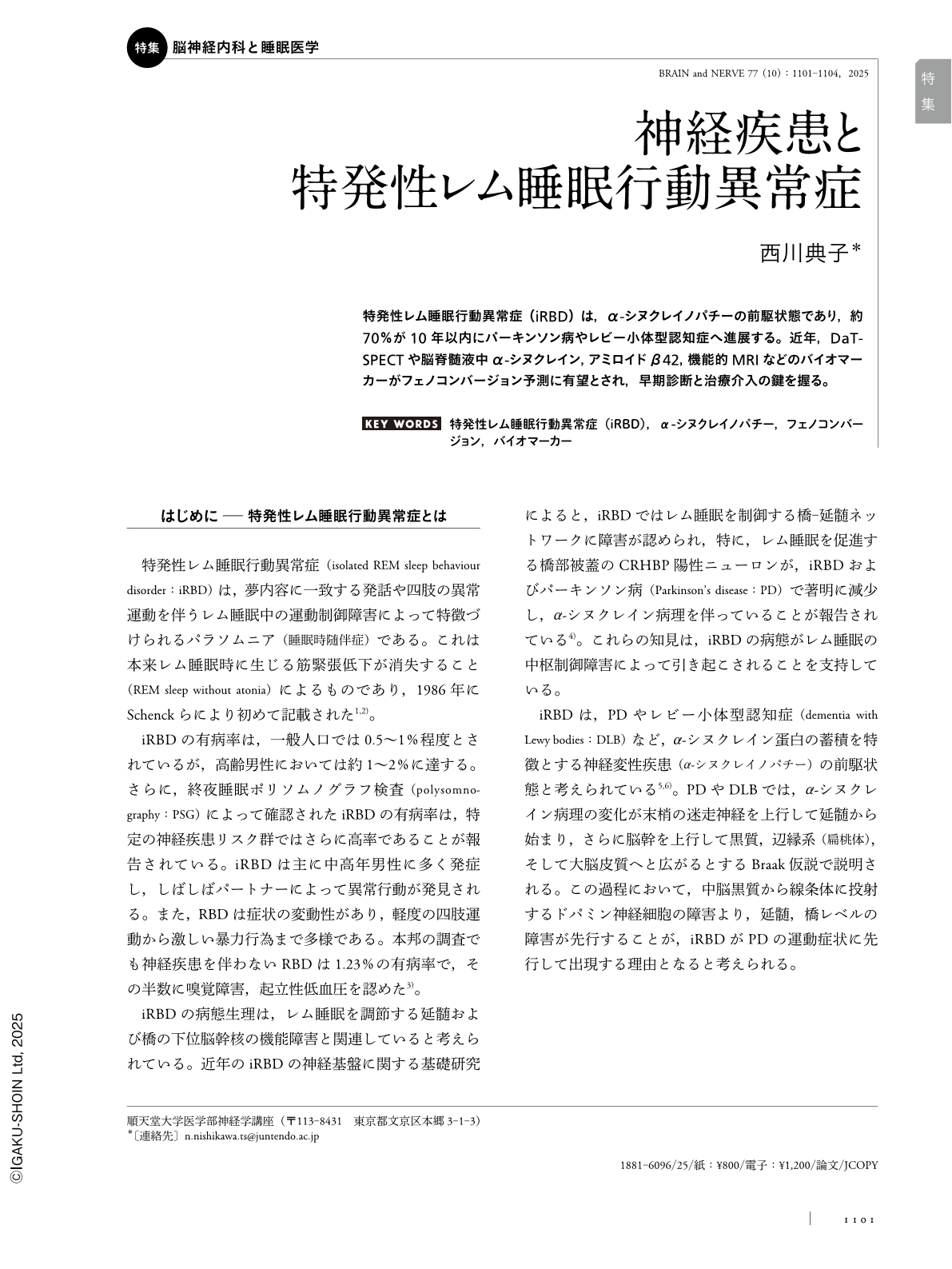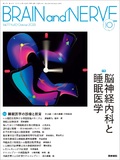Japanese
English
- 有料閲覧
- Abstract 文献概要
- 1ページ目 Look Inside
- 参考文献 Reference
特発性レム睡眠行動異常症(iRBD)は,α-シヌクレイノパチーの前駆状態であり,約70%が10年以内にパーキンソン病やレビー小体型認知症へ進展する。近年,DaT-SPECTや脳脊髄液中α-シヌクレイン,アミロイドβ42,機能的MRIなどのバイオマーカーがフェノコンバージョン予測に有望とされ,早期診断と治療介入の鍵を握る。
Abstract
Isolated rapid eye movement (REM) sleep behavior disorder (iRBD) is a parasomnia characterized by dream-enacting behaviors caused by the loss of muscle atonia during REM sleep. It is widely recognized as a prodromal phase of α-synucleinopathies such as Parkinson's disease and dementia with Lewy bodies. Longitudinal cohort and pathological studies have demonstrated that approximately 70% of patients with iRBD develop defined neurodegenerative disorders within 10 years. Recent advances have identified several promising biomarkers to predict phenoconversion, including dopamine transporter imaging (DaT SPECT), cerebrospinal fluid α-synuclein detected via RT-QuIC, decreased CSF Aβ42, and elevated CSF/serum albumin ratio indicating blood-brain barrier dysfunction. Moreover, functional magnetic resonance imaging studies have revealed altered connectivity in the frontostriatal and posterior cortical networks in patients with iRBD, which correlates with cognitive and motor symptoms. These multimodal markers have significant potential for stratifying phenoconversion risks and guiding early therapeutic interventions. Future efforts should focus on standardizing biomarker assays and validating them through multicenter longitudinal studies to enhance diagnostic precision and support disease-modifying clinical trials in the prodromal phase of Lewy body diseases.

Copyright © 2025, Igaku-Shoin Ltd. All rights reserved.


